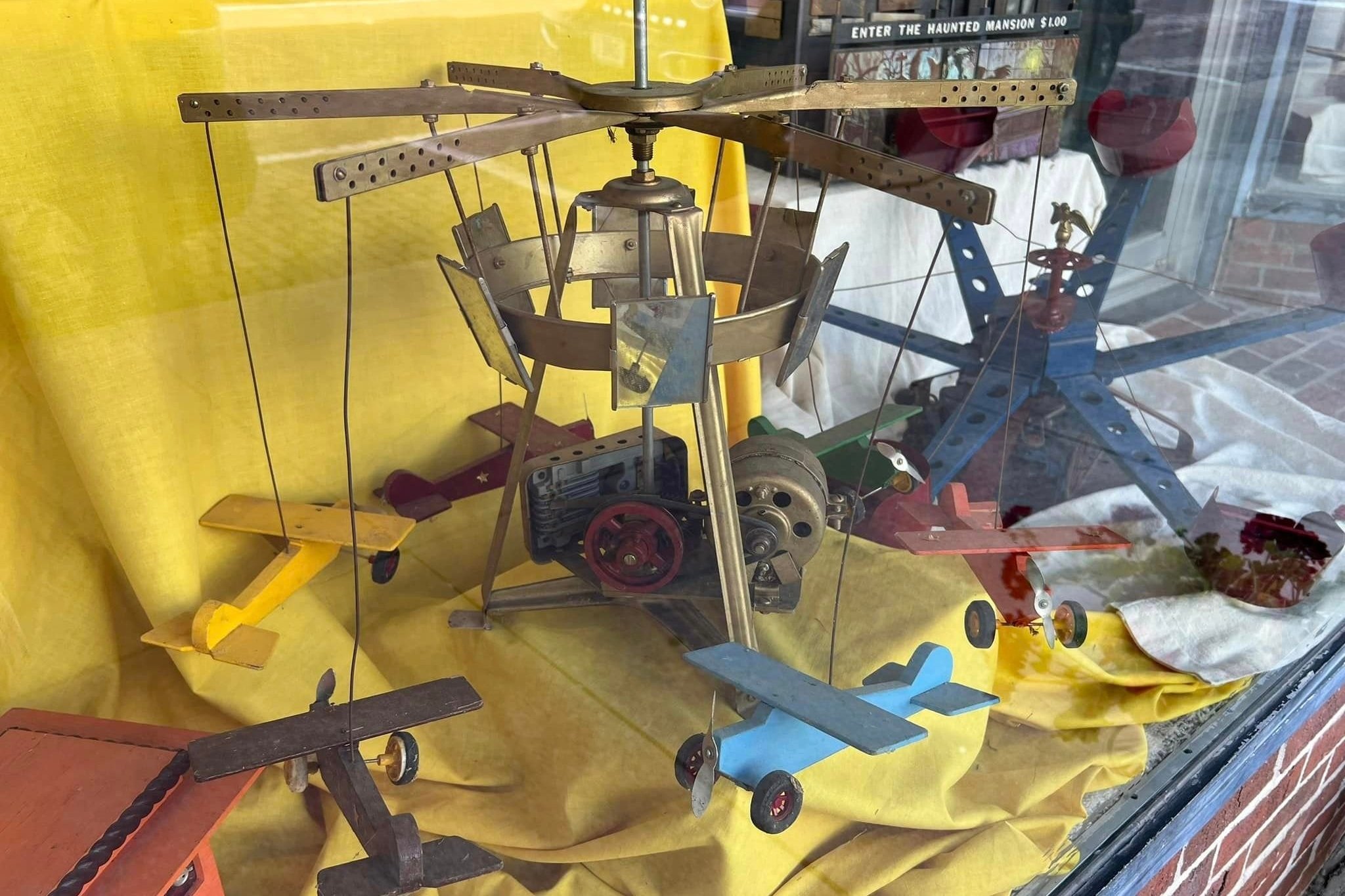Finding Beauty in the Ordinary: The Junk Art of Ernie Moore
Ernest “Ernie” Moore was a remarkable artist who transformed discarded metal objects into sculptures and plaques. Born in January 1911 in Fulton, Missouri, he had a talent for seeing beauty in the ordinary, and his creativity knew no bounds. He lived in Callaway County and grew up in the Star Park neighborhood just east of Second Street and Bluff Street, where he eventually raised his family. His home was a treasure trove of a lifelong collection of various items.
Moore devoted himself to his unique art form, using salvaged materials from rummage sales. A passage from the January 1986 issue of Art and Craft News stated that Moore “passes his talent off as just messin’ around, yet with a twinkle in his eye, tells how he creates. An ordinary teaspoon is transformed into the body of a motorcycle, a hairclip here, a curler there, and viola, a piece of art!” His sculptures came to life in astonishing detail, evoking whimsy and a sense of humor.
One of his remarkable pieces depicted people gathered around a still. It was meticulously crafted from funnels, pipes, gears and a night light that served as a lantern. The figures embodied a lifelike quality with carefully crafted steel wool beards. A horse, made from a hammer and chain links, carried a rider atop its body. Patriotism was captured in Moore’s gunners who proudly stood beneath a metal flag adorned with nuts for stars. Copper pipe end helmets rested on top of their heads while their comrade, the machine gunner, awaited action with a machine gun loaded with watchband shells.
Moore’s artwork was bustling with creativity. He incorporated an astonishing array of machinery, plumbing and household objects into his art. Each piece was a testament to his talent and ingenuity, from his Ford Model T constructed with remnants of various appliances to his singing cowboy adorned with a hat made from old metal washers. Movable parts, such as a door bolt that served as a machine gun shell chamber, added an interactive element to his sculptures.
Moore and his wife, Janie, spent many summer vacations in Colorado, which was the inspiration for his old west town and a source for many of the antiques he and his wife collected. He was also an avid gun collector, but he mostly liked tinkering with them to see how they worked rather than shooting them. His carnival rides were all motorized, and he took great care to make the speed and motion authentic. As the carousel turned, the horses moved up and down and rocked back and forth.
Beyond his artistic pursuits, Moore was a devoted family man who raised three children with his wife: Richard “Dick” Moore (Virginia) of St. Louis, Wiley Moore (Lorena) and Elaine Gordon (Lee) of Fulton. The couple had nine grandchildren and two great-grandchildren. Moore lived his entire life in Fulton, and his deep dedication to community led him to work for his hometown newspaper, The Fulton Sun, as a circulation assistant once he retired from Ovid Bell Press.
Although Moore didn’t participate in art shows or sell his creations privately, his passion for art stemmed from pure enjoyment and curiosity. With an acetylene torch in hand, he fearlessly cut, welded and bent his newfound treasures, turning them into extraordinary works of art. While he admitted to being impatient and eager to see the results, the intricate details of his sculptures spoke to the thought and creativity he poured into each piece. Moore’s art was a testament to the endless possibilities within everyday objects and the boundless imagination of a true artist. He continued collecting, cleaning and restoring antiques until his death in 2007 at age 96.




